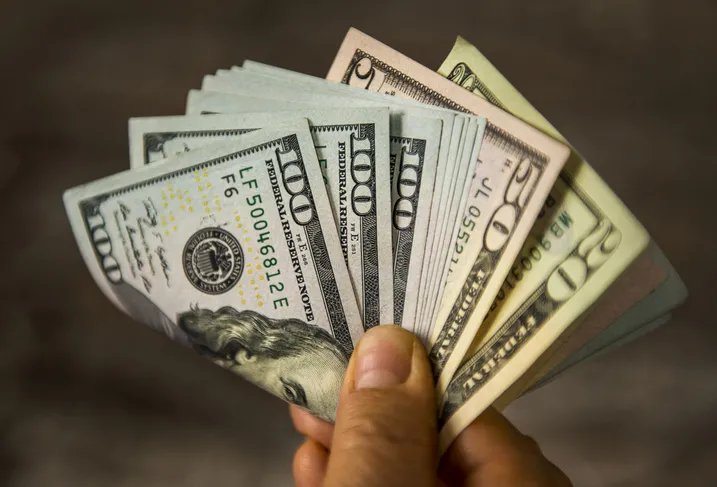Most money-saving hacks floating around the internet are either painfully obvious or completely unhinged. You know the ones—cutting your own hair in the dark, rinsing paper towels to reuse them, turning off your fridge “to save electricity.” Cute in theory. Chaotic in practice.
But every once in a while, a viral tip hits different. It’s smart, doable, and actually makes a dent in your spending without wrecking your life. These are the money-saving hacks that went viral for a reason—and for once, it wasn’t just the aesthetic. It was the results.
1. The “Pantry Challenge” Cuts Your Grocery Bill In Half

The pantry challenge isn’t new, but when it blew up on TikTok, people rediscovered how much food—and money—they were wasting. The premise is simple: stop buying groceries and cook exclusively from what’s already in your fridge, freezer, and pantry for one to two weeks. No grocery runs. No takeout. Just creativity and commitment.
It sounds intense, but the average American household wastes over $1,500 in food each year, according to an article in CNBC. This challenge forces you to finally use those canned beans, half-boxes of pasta, and frozen mystery bags. And once you realize how resourceful you can be, your weekly grocery bill drops—and stays down.
2. The “Buy Nothing” Groups That Deliver

Those Facebook “Buy Nothing” groups started as a hyperlocal sustainability trend but quickly went viral for their usefulness. People give away everything from furniture to unopened skincare to kids’ clothes—no strings attached. All you have to do is ask or scroll, and you might stumble upon exactly what you were about to buy.
It’s not just about scoring free stuff. Being part of a Buy Nothing community reshapes your spending mindset. Before you hit “add to cart,” you start thinking, “Can I find this for free first?” And more often than not, the answer is yes. It’s frugal meets feel-good.
3. The “Cash-Only Envelope System” That Ends Mindless Spending

This old-school budgeting method made a huge comeback online thanks to aesthetically pleasing envelope videos—complete with pastel binders and acrylic cash trackers. But beneath the vibe is a system that genuinely works, according to NerdWallet. You divide your spending cash into physical envelopes (groceries, gas, fun, etc.), and when an envelope is empty, that’s it.
What makes it powerful is the tactile accountability. Swiping a card doesn’t hurt. But breaking a $20 bill? That hits. It forces you to rethink impulse buys and stay within real limits. It’s budgeting that keeps your fingers—and spending—disciplined.
4. The “52-Week Savings Challenge” Feels Like A Game

This viral savings plan asks you to save $1 the first week, $2 the second, and so on, until you hit $52 on the final week. According to Fidelity, by the end of the year, you’ll have saved $1,378 without even noticing. What makes it work is how gradually it builds up—so you never feel the sting.
People on social media have taken it to new levels, using printable trackers, apps, or reverse versions (starting with $52 and working down). It turns saving into something visual, satisfying, and slightly competitive. It’s gamified finance, and it sneaks up on you—in the best way.
5. The “No-Spend Month” That Forces You To Get Creative

A no-spend month sounds terrifying until you realize how much of your spending is habitual, not essential. The rule is: no non-essentials for 30 days. That means no Amazon hauls, no Target wanderings, no impulse coffees. Essentials only. And suddenly, your bank account stops hemorrhaging.
People document their no-spend months like personal finance reality shows—sharing recipes, hacks, and emotional breakdowns. But the end result is always the same: you realize how little you actually need. Bonus: it breaks the emotional grip consumer culture has on your brain.
6. Using “Credit Card Autopay Stacking” To Game The System

This finance hack gained momentum on Reddit and TikTok for its clever twist on cash flow management. Here’s how it works: stagger your automatic payments for different cards throughout the month so your paycheck covers them in waves—without ever missing a due date. It keeps your credit score clean and your budget breathable.
People swear by it for reducing the psychological chaos of one massive due-date pileup. And when paired with cashback or points cards, you’re not just organizing payments—you’re maximizing benefits. It’s spreadsheet-nerd heaven, but even beginners can pull it off.
7. Setting Up “Invisible Savings” Transfers That You Forget About

The concept of invisible saving—automatically transferring small amounts into a hidden or separate savings account—feels obvious until you actually do it. Apps like Digit or banking features like “round-up savings” made it viral because they made it effortless. You don’t see the money leave. You just check one day and realize you’ve saved $600.
People use nicknames like “DO NOT TOUCH” or “Emergency Champagne Fund” to further deter themselves from dipping in. And the stealth accumulation feels like a reward instead of a restriction. It’s saving for people who hate saving.
8. The $5 Bill Rule That Adds Up Faster Than You Think

The rule is simple: every time you get a $5 bill, you stash it. No exceptions. No spending it. Just save. It sounds silly until you do it for a few months and suddenly realize you have $200 in a drawer without even trying.
This hack went viral because of how easy—and oddly satisfying—it is. Some people graduate to $10 or $20 once they get the hang of it. But starting small builds discipline without pressure. It’s sneaky savings, and it feels like beating the system.
9. Stocking A “Use-It-Up” Bin In Your Bathroom Or Kitchen

One of the most underrated money-saving hacks? Actually using the stuff you already bought. The “use-it-up” bin trend encourages you to designate a small container where you toss half-used beauty products, pantry items, or forgotten snacks—and commit to finishing them before opening anything new.
People were shocked to realize how many duplicate serums, dry shampoos, or spice jars they had collecting dust. This hack kills waste and gives you that weird little dopamine hit of finishing something. Plus, it delays restocking—and your wallet feels the difference.
10. Cancelling Subscriptions With One Ruthless Audit

There’s something deeply viral about a dramatic “I cancelled 12 subscriptions and saved $1,000” post—and for good reason. We’re all drowning in forgotten auto-renews. Taking 20 minutes to audit your subscriptions and ruthlessly cancel the ones you don’t need is a one-time pain for long-term peace.
Apps like Rocket Money and Truebill make it easier, but even a quick look through your bank statements can surface some horrifying truths. Streaming platforms, “free” trials, niche fitness apps—it adds up. Cutting them doesn’t feel like deprivation. It feels like freedom.
11. Freezer Meals That Destroy The Takeout Habit

One viral TikTok challenge had people batch-cook and freeze 10 meals in one weekend to avoid weeknight takeout—and the results were stunning. Not only did it cut food spending dramatically, it also killed decision fatigue. When dinner’s ready in five minutes, you don’t need Uber Eats.
These aren’t sad frozen casseroles, either. We’re talking full meals—Korean beef bowls, soups, dumplings, tikka masala. The up-front time investment pays off big. And once you’ve felt the calm of not panicking over dinner, you never go back.
12. Using The “Third-Day Rule” For Every Non-Essential

Before you buy anything non-essential—clothes, tech, skincare—you wait three days. That’s the third-day rule. If you still want it after 72 hours, you can get it. But more often than not, the desire evaporates.
It’s the viral sibling of the 30-day rule, but more realistic for impulse-control beginners. It turns every purchase into a conscious choice instead of a dopamine-driven reflex. And when you do finally buy something, it feels earned. Controlled. Satisfying. Which is what smart spending should feel like.
13. The “Treat Fund” That Keeps You From Self-Sabotage

Here’s the psychology trick that keeps frugal burnout at bay: set up a small, dedicated “treat fund” each month—just for joy. It could be $20 or $50, but it’s yours to spend guilt-free. No justification required.
This went viral because it gave permission to save without suffering. When you know a latte or new nail polish is budgeted in, you don’t spiral into revenge spending. It’s balanced. Sustainable. And proof that you can be financially responsible without living like a monk.
This article is for informational purposes only and should not be construed as financial advice. Consult a financial professional before making investment or other financial decisions. The author and publisher make no warranties of any kind.








